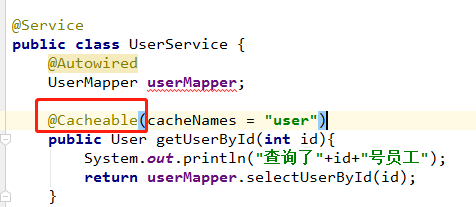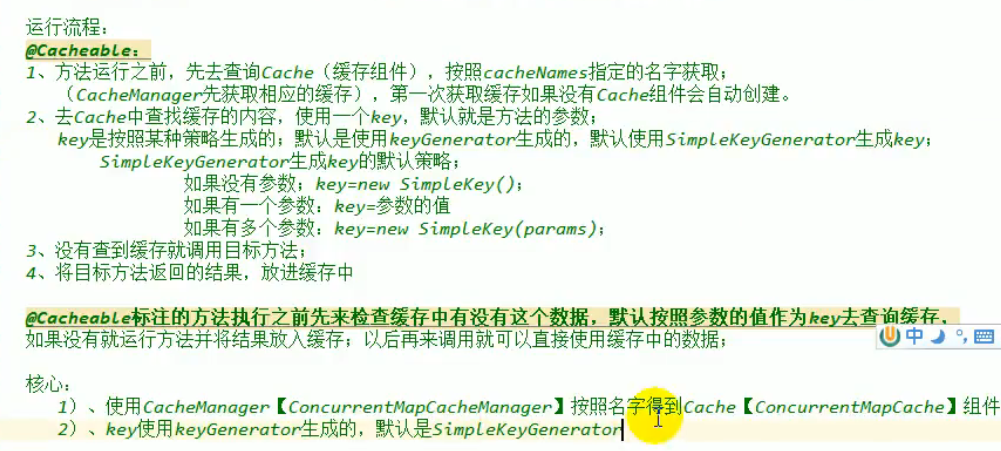
使用SpringBoot开启缓存分为两步:
- 开启基于注解的缓存
- 标注缓存注解即可



如上就是一个简单的缓存示例


默认使用的是ConcurrentHashMap组件用来缓存的
package ustc.anmin.springboot.service; import org.springframework.beans.factory.annotation.Autowired; import org.springframework.cache.annotation.CacheConfig; import org.springframework.cache.annotation.CacheEvict; import org.springframework.cache.annotation.CachePut; import org.springframework.cache.annotation.Cacheable; import org.springframework.stereotype.Service; import ustc.anmin.springboot.bean.User; import ustc.anmin.springboot.mapper.UserMapper; //抽取缓存的公共配置 @CacheConfig(cacheNames = "user") @Service public class UserService { @Autowired UserMapper userMapper; /** * cacheNames:缓存的名字 * key:指定key的名字 可以使用spel表达式 * condition:指定条件下符合 才进行缓存 #args[0]>1 第一个参数的值大于一才进行缓存 */ @Cacheable(cacheNames = "user") public User getUserById(int id) { System.out.println("查询了" + id + "号员工"); return userMapper.selectUserById(id); } /** * 既调用方法 又更新缓存数据 * 注意缓存的key * 默认的key是传入的对象 value是返回的对象 */ @CachePut(cacheNames = "user", key = "#user.id") public User updateUser(User user) { System.out.println("更新了" + user.getId() + "号员工"); userMapper.updateUser(user); return user; } /** * 清除缓存 * beforeInvocation=false 是否在方法执行之前清空缓存 方法出错就不清除 * allEntries 是否清除所有的缓存 * */ @CacheEvict(cacheNames = "user",key="#id"/*,allEntries = true*/) public String deleteUser(int id){ System.out.println("删除"+id+"号员工"); return "delete success!"; } }